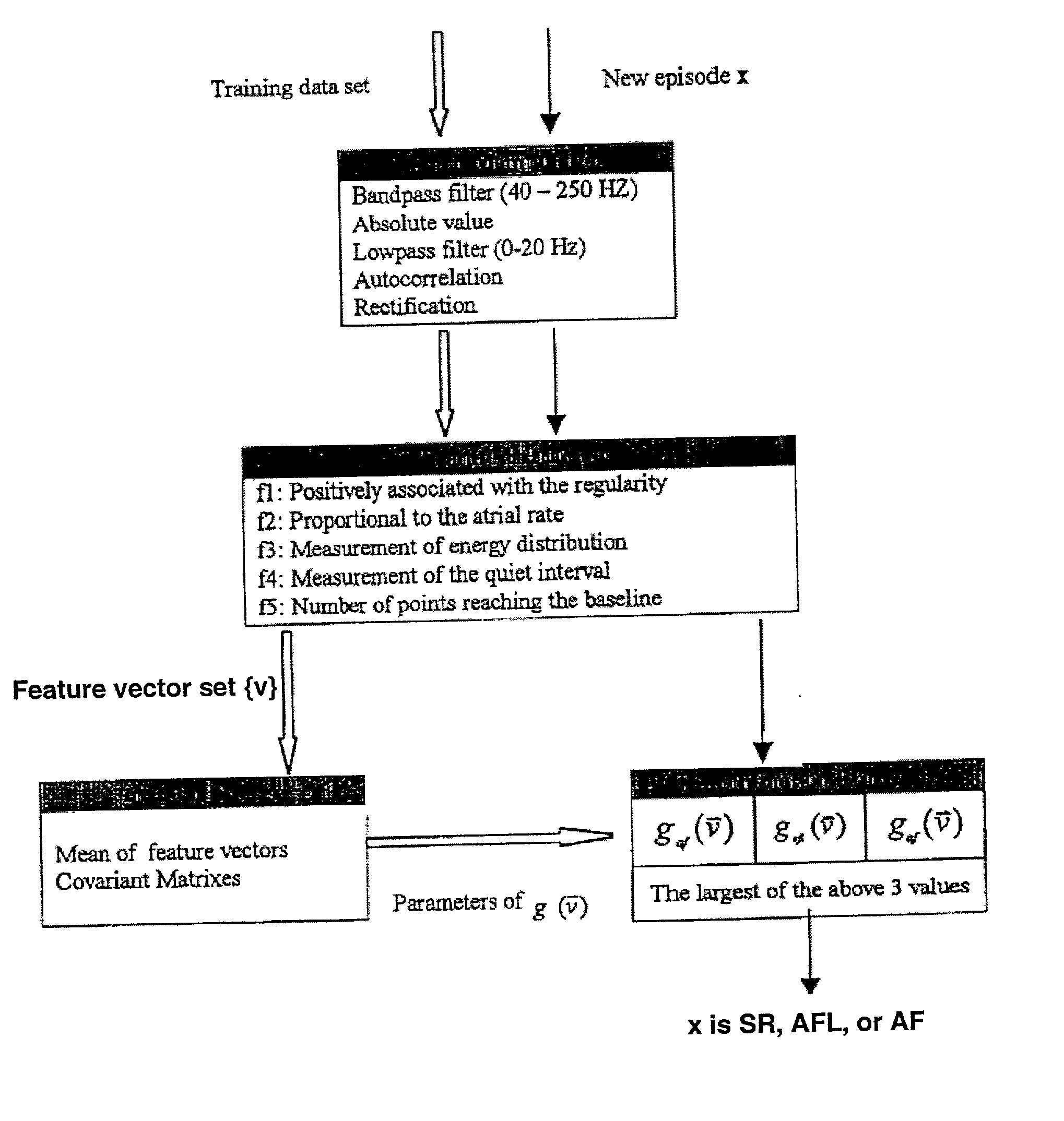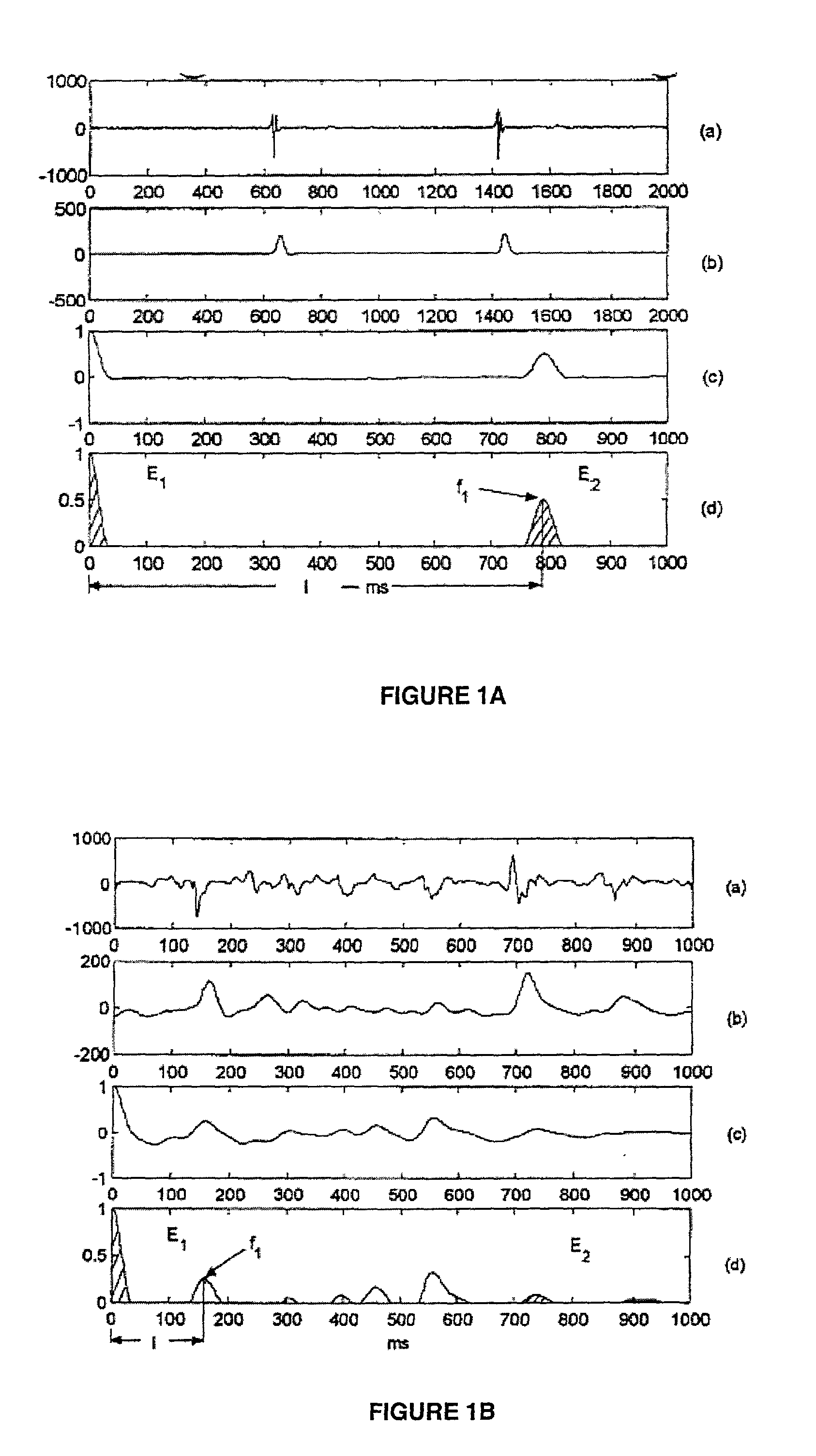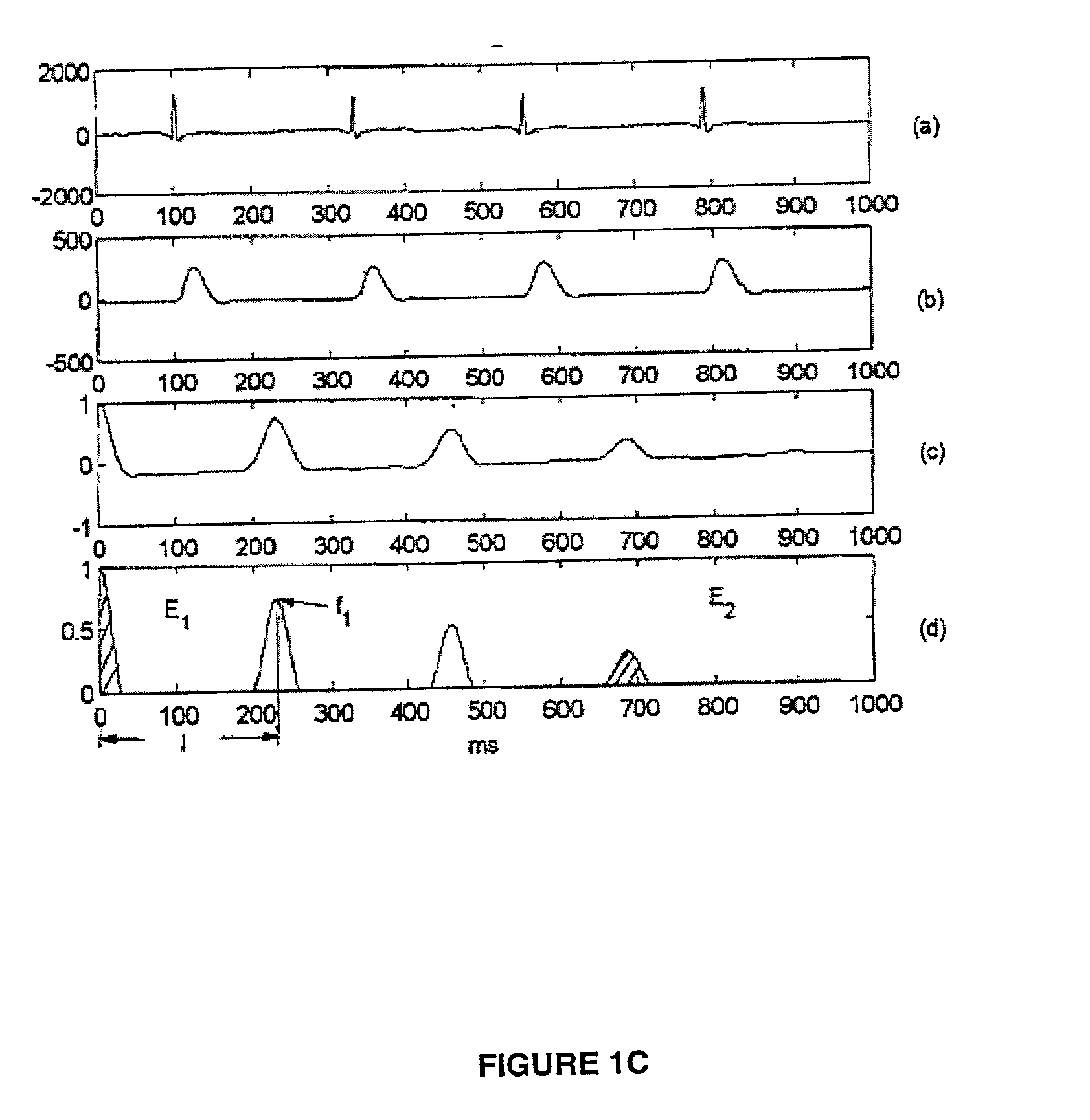Bayesian discriminator for rapidly detecting arrhythmias
a bayesian discriminator and rapid detection technology, applied in the field of multiple-index bayesian discriminator generation and analysis of data, can solve problems such as the risk of stroke and death, and achieve the effects of improving the performance of the algorithm, good anti-noise property, and good ets sm
- Summary
- Abstract
- Description
- Claims
- Application Information
AI Technical Summary
Benefits of technology
Problems solved by technology
Method used
Image
Examples
Embodiment Construction
[0025] The present invention generally relates to methods, systems, and devices for detecting and treating arrhythmias and heart diseases. Atrial tachyarrhythmias are detected in a subject using a multiple-index Bayesian discriminator. The method for detection comprises the steps of obtaining an open-test data set of bipolar intra-atrial signals from the subject of interest and using a computer or computers to analyze the open-test data set. Furthermore, the method for detection generates a result in accordance with a set of estimated conditional probabilities from a training data set based on the multiple-index Bayesian discriminator. The use of a computer, or a computing device system in practicing the method is illustrative and includes any computer executable processing device. Similarly, the method is suitable for detecting various conditions such as sinus rhythm, atrial flutter, atrial fibrillation, or any type of arrhythmias, heart diseases, or physiological conditions. In ge...
PUM
 Login to View More
Login to View More Abstract
Description
Claims
Application Information
 Login to View More
Login to View More - R&D
- Intellectual Property
- Life Sciences
- Materials
- Tech Scout
- Unparalleled Data Quality
- Higher Quality Content
- 60% Fewer Hallucinations
Browse by: Latest US Patents, China's latest patents, Technical Efficacy Thesaurus, Application Domain, Technology Topic, Popular Technical Reports.
© 2025 PatSnap. All rights reserved.Legal|Privacy policy|Modern Slavery Act Transparency Statement|Sitemap|About US| Contact US: help@patsnap.com



